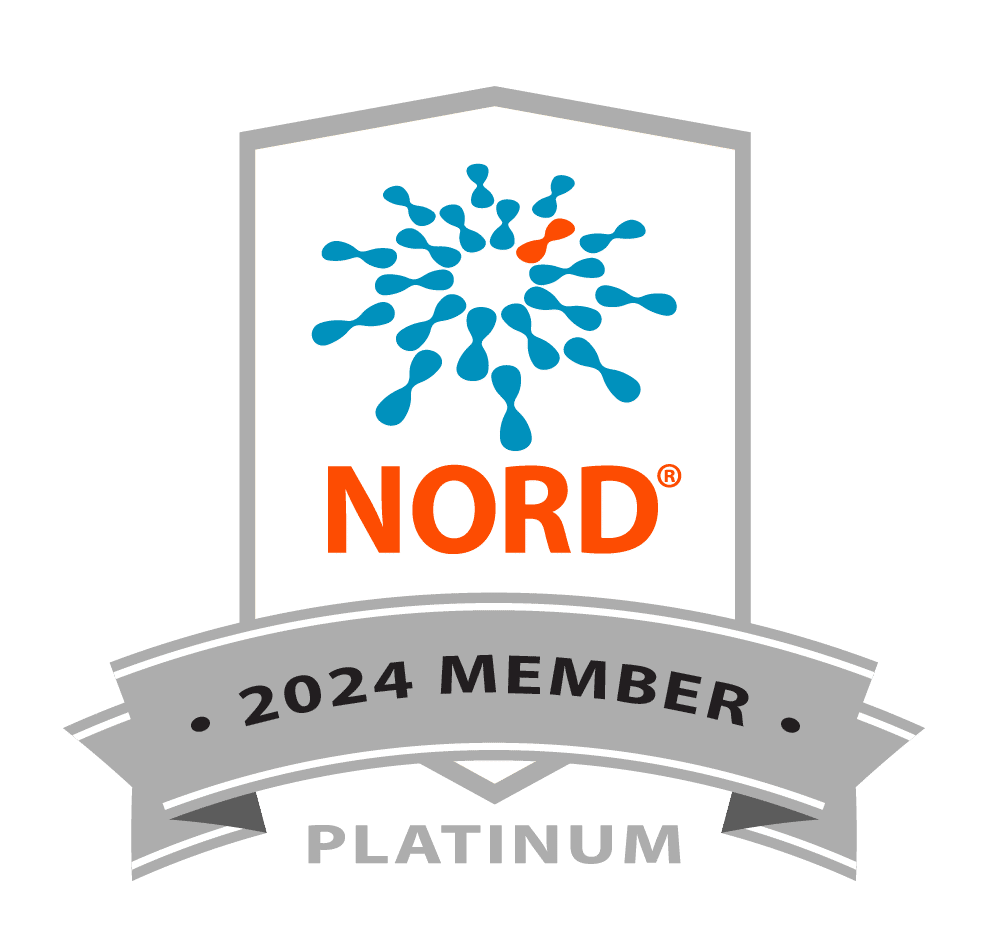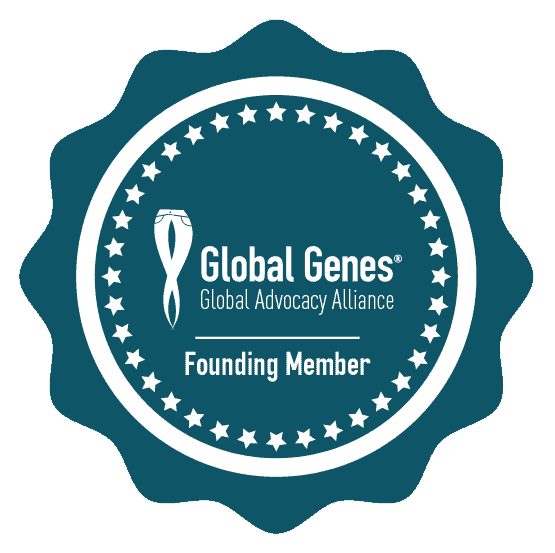NMOSD
Prognosis & Management
In NMOSD, the likelihood of recurrence of disease activity is greater than 90%. Attacks in NMOSD can be devastating. Prior to effective treatments for NMOSD became available, about 50% of those diagnosed with NMOSD were dependent on a wheelchair and/or functionally blind by 5 years. With the advent of the antibody test and effective treatments, we can reduce the risk of relapse, but each attack is still considered potentially devastating. Therefore, it is generally thought that ongoing treatment with medications that suppress the immune system and prevent relapses is necessary. The three primary off-label therapies used in the US are mycophenolate mofetil (CellCept), rituximab (Rituxan), and azathioprine (Imuran), but new therapies have been FDA approved based on randomized clinical trials that demonstrated effective and safe strategies to treat NMO. For more information about all of the NMOSD medications available, please visit Neuromyelitis Optica Spectrum Disorder (NMOSD) Medications and NMOSD Therapeutics at a Glance.
All of these medications carry a risk of infections, particularly upper respiratory infections and urinary tract infections (UTIs). Good hygiene and hand washing are important if on immunosuppressants, as is having a good urologist if at risk for UTIs. There is also the risk with any of these medications of the development of a rare brain infection called progressive multifocal leukoencephalopathy, or PML. PML is an infection caused by the reactivation of a virus, called the JC virus, which lives in the kidney. In someone who is immunosuppressed, this virus can escape the kidney, cross the blood-brain barrier, and enter the brain, causing profound inflammation. Although it can be treated, it is very devastating and sometimes fatal. It is important to know that exposure to these medications in NMOSD has not led to a known case of PML. The known rate of incidence of PML if on Rituxan is estimated at 1 in 25,000 and the rate in CellCept is estimated at 1 in 6,000 based on data from use of these medications for immunosuppression for other purposes. The manufacturer of Imuran cautions about a risk of PML with Imuran as well, but the incidence of PML on Imuran is not documented. Clinical diligence and early intervention are important if PML is suspected.
Chronic immunosuppression requires regular skin exams with a dermatologist since our immune system is our best defense against cancer cells developing, and any of these treatments can interfere with its normal functioning.
Mycophenolate mofetil and azathioprine are both twice daily pills which broadly suppress the immune system. Both medications were originally FDA approved for organ transplant rejection prophylaxis, although azathioprine now is indicated in rheumatoid arthritis, and both have been widely used in several autoimmune disorders. These medications require frequent blood draws upfront, then generally twice yearly to monitor for liver toxicity and to ensure optimal immunosuppression (absolute lymphocyte count around 1 and total white blood cell count between 3 and 4).
SOLIRIS®️ (eculizumab) was the first FDA-approved complement inhibitor indicated for the treatment of adults with AQP4 antibody-positive NMOSD. Eculizumab is a complement inhibitor; the complement system is a part of the immune system that aids your body in attacking foreign microbes and promoting inflammation. It is given by intravascular (IV) infusion in an outpatient infusion center. One infusion is given every two weeks, but to start therapy, there is one infusion weekly for five weeks, followed by infusions every two weeks. In the PREVENT clinical trial, eculizumab reduced the risk of relapse by roughly 94%. In the PREVENT clinical trial, 143 AQP4 antibody positive individuals were studied. They received either eculizumab or placebo, however both groups were allowed to continue other immunosuppressive medications (steroids, azathioprine, mycophenolate modafinil, etc). The most common side effects include headache, upper respiratory tract infections, high blood pressure, nausea, vomiting, and diarrhea. Infusion reactions may occur, ranging from flu-like symptoms, low blood pressure, hives to swelling, shortness of breath and, in more severe cases, shock. A serious infection called meningococcal meningitis may occur; this is from a bacterial infection that can cause inflammation around the brain. Vaccination against meningococcus is required to use eculizumab. There is no FDA pregnancy category assigned to Eculizumab. Eculizumab has been used safely for the treatment of other medical conditions during pregnancy on an individual basis but has not been studied in large groups of pregnant people. It is unclear if this medication is generally safe for use in pregnancy and should be discussed with your doctor.
Alexion offers patient support through its OneSource program.
ULTOMIRIS®️ (ravulizumab) was the second FDA-approved complement inhibitor indicated for the treatment of adults with AQP4 antibody-positive NMOSD. It is similar to eculizumab (SOLIRIS) but has been modified to last longer than eculizumab. It is given by intravascular (IV) infusion. One infusion is given every eight weeks, but to start therapy, there are two infusions two weeks apart. In the CHAMPION-NMOSD clinical trial, ravulizumab reduced the risk of relapse by roughly 98.6%. In the CHAMPION-NMOSD clinical trial, 58 AQP4 antibody positive individuals were studied. They were compared to the placebo group in the PREVENT trial, which was the clinical trial that studied eculizumab. Both groups were allowed to continue other immunosuppressive medications (steroids, azathioprine, mycophenolate modafinil, etc.). The most common side effects include headache, upper respiratory tract infections, high blood pressure, nausea, vomiting, and diarrhea. Infusion reactions may occur, ranging from flu-like symptoms, low blood pressure, hives to swelling, shortness of breath and, in more severe cases, shock. A serious infection called meningococcal meningitis may occur; this is from a bacterial infection that can cause inflammation around the brain. Vaccination against meningococcus is required to use ravulizumab. There is no FDA pregnancy category assigned to ravulizumab. Ravulizumab has been used safely for the treatment of other medical conditions during pregnancy on an individual basis but has not been studied in large groups of pregnant people. It is unclear if this medication is generally safe for use in pregnancy and should be discussed with your doctor.
Alexion offers patient support through its OneSource program.
UPLIZNA™ (inebilizumab-cdon) is the second FDA-approved treatment for NMOSD in adult patients who are AQP4 antibody positive. Inebilizumab works by killing B-cells, a type of white blood cell felt to cause inflammation leading to injury in NMOSD. Mechanistically, this drug is similar to Rituximab. It is given by intravascular (IV) infusion in an outpatient infusion center. It is given as one infusion every six months, with the exception of the first dose which is divided into two infusions (at week 0 and week 2). In the N-Momentum clinical trial, inebilizumab reduced the risk of relapse by roughly 73% compared to individuals with NMOSD not on therapy. In the N-Momentum clinical trial, 230 individuals were studied. They were both positive and negative for the AQP4 antibody, with slightly better response seropositive participants with a 77% reduction in relapse risk. Individuals taking the drug were compared to individuals not taking any drug. There is a higher risk of infections, most commonly respiratory tract and urinary tract infections. Joint pain may occur. Infusion reactions may occur, ranging from flu-like symptoms, low blood pressure, hives to swelling, shortness of breath and, in more severe cases, shock. There can be reactivation of old infections, like hepatitis and tuberculosis, which your doctor will screen for before starting the medication. There is no FDA pregnancy category assigned to Inebilizumab. Studies have shown that Inebilizumab can cross the placenta and decrease fetal white blood cells, similar to Rituximab. It is unclear if this medication is safe for use in pregnancy and should be discussed with your doctor.
AMGEN is committed to helping patients access UPLIZNA, and they have a team in place to support both patients and their care partners. Horizon By Your Side is a complimentary support program for patients, care partners and healthcare professionals. Case managers will help navigate insurance and financial assistance needs where appropriate. For more information on this program, please visit https://www.horizonbyyourside.com/.
ENSPRYNG™ (satralizumab-mwge) is the first and only subcutaneous treatment for adults living with AQP4 antibody positive NMOSD. Satralizumab works by inhibiting a certain protein called interleukin-6, which normally function to mediate communication between white blood cells and increase inflammatory immune responses. It is given by injections under the skin at home. It is given as one injection into the skin per month, with the exception of the first month with injections at Weeks 0, 2, and 4. In the clinical trial Sakurastar, satralizumab reduced the risk of relapse by roughly 55% compared to individuals with NMOSD not on therapy. In the clinical trial Sakurastar, 95 individuals were studied. They were both positive and negative for the AQP4 antibody with seropositive individuals responding much better than seronegative. Individuals taking the drug were compared to individuals not taking any drug. Upper respiratory tract infections, headache, rash, joint pain, fatigue, and nausea are the most common side effects. There is no FDA pregnancy category assigned to satralizumab. There has been no harm in animal studies, however no human studies have been performed. It is unclear if this medication is safe for use in pregnancy and should be discussed with your doctor.
Genentech is committed to helping patients access the medicines prescribed by their physicians. For people with NMOSD, the ENSPRYNG Access Solutions team is available to answer questions, provide product education and injection training, and help families understand insurance coverage and navigate appropriate financial assistance options to start and stay on ENSPRYNG. Patients can call 1-844-NSPRYNG (844-677-7964) to speak to a Patient Navigator or visit http://www.Enspryng.com.
Azathioprine is the medication that has been around the longest, and, over the years, has been used most widely in NMOSD. However, while the annualized relapse rate seems to be low on azathioprine, one complication with this medication is that some are not able to stay in remission on azathioprine alone and have to also be on steroids (complications of steroids will be discussed below). Additionally, a long-term study of azathioprine found that the risk of lymphatic-proliferative cancers was reported to be 3%. A common side effect includes gastrointestinal upset, and this may manifest as bloating, constipation, nausea, diarrhea, and may vary throughout the course of one’s time on the medication. Azathioprine is contraindicated in pregnancy, so pregnancy planning is very important. It is FDA Category D (which means one should not take this drug during pregnancy unless it’s lifesaving) and is associated with an increased risk of miscarriages, 7% rate of congenital problems, and high rate of bone marrow suppression that recovers after birth. It is the cheapest of the medications.
Mycophenolate mofetil Mycophenolate mofetil has a similar effect on the gastrointestinal system, though many report that the symptoms are milder with mycophenolate as compared with azathioprine. Additionally, some complain of headaches with mycophenolate, particularly in the beginning; these tend to wane with ongoing use. Generally, mycophenolate seems to be quite robust in its ability to keep individuals in remission, and, what’s more, while lymphoma may be a risk of this medication, there have been no cases reported in NMOSD patients while on this medication, so the risk is likely low. Mycophenolate is also contraindicated in pregnancy, so, again, planning is imperative. It is also an FDA Category D (one should not take this drug during pregnancy unless it’s lifesaving), and carries a 45% chance of miscarriage. Of those that do not miscarry, 22% have congenital defects, mostly in the face (mouth, ears).
Rituximab is an intravascular infusion which works differently from the other two agents listed above. Rather than being a broad immunosuppressant, rituximab completely depletes one particular type of white blood cell called B-cells, which has downstream effects on the rest of the immune system. Though protocols are slightly different, in general, it is given two times twice a year (4 infusions total) and is given in an outpatient infusion center. This is because of a 30% risk of an infusion reaction without pre-medication with some cocktail of methylprednisolone, diphenhydramine and perhaps acetaminophen. The medication is quite well-tolerated. There are generally no side effects to the medication. There is no lymphoma risk with this medication. There is a monthly blood test to monitor the B-cell CD20 expression. Rituximab is safer in pregnancy than the other two previously described, (Category C; may be toxic in animals or no human data) — there are no official FDA reports of birth defects in cases of pregnancy with rituximab, but babies are born with no CD20 cells. It does not appear to increase risk of infection in babies as the cells repopulate within 6-18 months. In monkey studies performed by the manufacturer, there was no toxicity on the fetus, and monkey babies were born with no CD20 cells, again with no infection risks. In the largest case series published in February 2011, out of 153 women who became pregnant on rituximab, there were 4 post-natal infections and two congenital abnormalities (1 club foot, 1 heart defect), but these women were also on other immunosuppressant medications during the pregnancy, including azathioprine and mycophenolate. They concluded that rituximab does not increase the risk of congenital malformations above the natural rate of 1-2%. Planned pregnancy is still recommended.
Low-dose prednisone is used as well, more often in other parts of the world. As noted above, some clinicians also use it in combination with azathioprine for those who continue to relapse on azathioprine alone. Its use is oftentimes not favored in the US for maintenance therapy due to the potential complications associated with long-term steroid use, including diabetes, osteoporosis, weight gain, mood instability, hypertension, skin changes, etc.




